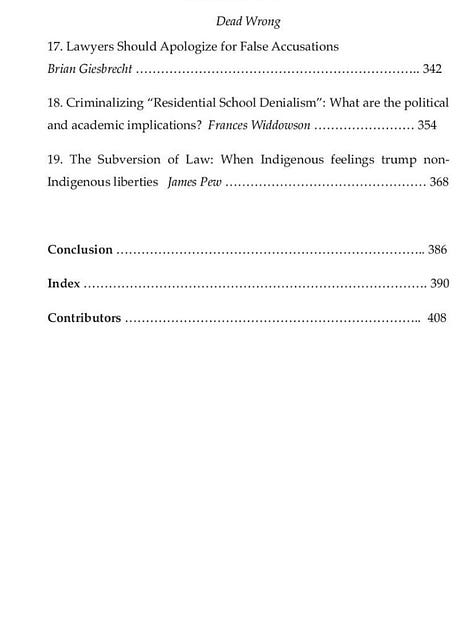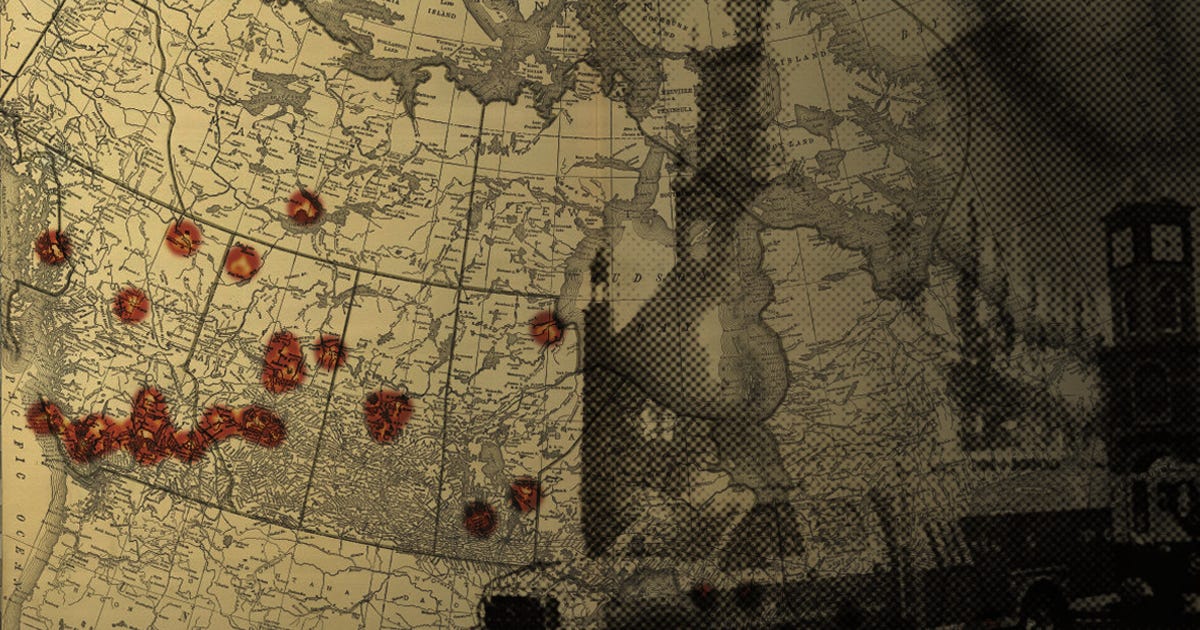The Burning: Canada’s churches ablaze
Read a special excerpt from Cosmin Dzsurdzsa's chapter in the new book 'Dead Wrong: How Canada Got the Residential School Story So Wrong.'
This is a an abridged version of Cosmin Dzsurdzsa’s chapter from the new book, ‘Dead Wrong: How Canada Got the Residential School Story So Wrong.’ Purchase the book today to read the full essay and 18 other great chapters - along with a special forward by Juno News co-founder Candice Malcolm. Available today from Amazon!
The church arsons began in the west.
A month after the Tk’emlúps announcement about “215 children buried” at its own on-reserve residential school, two churches in British Columbia were destroyed by fire. By June 21, the Sacred Heart Mission Church of Penticton and the century-old St. Gregory Mission Church on Osoyoos First Nation land — both Catholic — had been set ablaze.
Cases of suspected arson soon appeared all across Canada. Over the next few years, arsonists were indiscriminate, as to denomination, in their targets. Catholic churches were hit frequently, but so too were Anglican, Presbyterian, Eastern Orthodox, and Baptist congregations. What they all had in common was that they were Christian places of worship.
Some of them had stood for decades on First Nations ground; now they were reduced to charred ruins, their bells silenced, their stained glass shattered.
Consider the Church of the Good Shepherd in Taloyoak, Nunavut, a beacon in the Arctic, now touched by flame. Or St. George Anglican Church, nestled in the village of Loon Lake, Saskatchewan, completely engulfed in flames.
The prairies bore witness to the widespread destruction, as Our Lady of Mercy Catholic Church in Kehewin, Alberta, became another victim of arson. And as the wave travelled eastward, it even reached St. Kateri Tekakwitha Church on the Sipekne’katik First Nation in Nova Scotia. No corner of the country, and no Christian denomination, was fireproof.
Church fires are not unknown in Canada, but the scale and speed of post-Kamloops arsons marked a dramatic escalation. True North was the first media outlet to attempt to document the scale, launching an interactive map that tracked over 110 incidents by the summer of 2025. In 2025, the Macdonald Laurier Institute released a study confirming that arson at religious institutions more than doubled compared to the 2021 baseline.
The study reveals that no groups or individuals have claimed responsibility, and less than 4 per cent of arson incidents between 2021 and 2023 have led to charges. No coordinated RCMP investigation has taken place.
The question remains: Who set these fires, and why?
The headlines appeared in scattered bursts: “Everything is ashes,” “Two more Catholic churches burn down,” “Suspects sparked Peace River church fire.” The image of churches going up in flames became familiar and stirred suspicion among those paying attention to the residential school graves narrative. Yet no legacy media outlet dared to investigate them as part of a broader phenomenon.
By July 2021, the scale was undeniable. True North’s count indicated nearly 30 incidents of vandalism and suspected arson had targeted churches across Canada. CBC released an early, vague report on an unspecified number of Catholic churches, omitting names and ignoring the mounting tally across denominations.
A striking example was St. Paul’s Anglican Church on Gitwangak Band land — built by locals in the late 1800s — burned despite having no connection to residential schools. Chief Sandra Larin said: “It’s tough for them to see that part of our history that wasn’t directly involved with residential school be so callously vandalized.”
Acts of vandalism proliferated. St. Augustine’s in Vancouver was defaced with the word “killers.” Soon after, St. Jude’s Parish was splashed with orange paint by two women, one wearing a jacket reading “Church is Complicit.” Both avoided criminal records. Vancouver alone saw thirteen churches targeted between June 2 and July 22.
Calgary faced ten vandalized churches on Canada Day, including Protestant congregations. Yet CBC did not acknowledge a link between widespread arsons until January 2024 — two and a half years later — still omitting several cases.
The Wall Street Journal became the first major outlet to acknowledge the severity on July 9, 2021, with Paul Tuns noting the government’s perplexing inaction: Trudeau did not speak until July 1, despite the first suspected arson on June 21.
Meanwhile, attempts in the House of Commons to raise the issue were met with indifference. Conservative MP Dane Lloyd questioned CSIS and Public Safety officials about the lack of attention to nearly 30 church arsons, but officials deflected. Lloyd highlighted the Morinville fire, where over 50 residents had to be evacuated.
In February 2024, Liberal and NDP MPs shut down a unanimous consent motion condemning an attempted arson at Blessed Sacrament Parish in Regina. Firefighters had saved the historic church from destruction after a masked arsonist doused and ignited its entrance.
A later exchange saw Conservative MP Garnett Genuis press NDP MP Leah Gazan to condemn church burnings affecting Indigenous communities. She refused, instead accusing him of racism for raising the issue without “proof” of who was responsible.
In 2024, the crisis took a deadly turn. In Winnipeg, two churchgoers and new immigrants living above the Covenant International Church died after an arsonist set the building on fire. An investigation led to the arrest of Alex Donald Courchene, charged with two counts of second-degree murder and arson.
In their study, MLI found that by January 2024, nine arson incidents over 2021–23 had resulted in charges — 3.8 percent of the 238 incidents. More than 96 percent of perpetrators remain unidentified.
Some arrests have occurred following the church arsons, primarily in the west. In Regina, Jordan Willet was charged in February 2024 after a fire at Blessed Sacrament Parish. Two youths were charged in December 2024 for burning a Roman Catholic Church on Alexander First Nation, and in Loon Lake, Saskatchewan, Shandon Chief was charged with arson.
Yet even when arrests occur, accountability is scarce. In the Grouard, Alberta case, Kenneth Ferguson pleaded guilty only to break and enter, with the arson charge dropped. His co-accused, Gerald Capot, later failed to appear for sentencing after admitting to burning St. Bernard Catholic Church.
Meanwhile, academic voices like Sean Carleton attempt to reframe the narrative, dismissing attention to church fires as “distraction tactics used by denialists,” accusing critics of portraying “Christians as the true victims.”
Carleton accuses True North of portraying “Christians as the true victims,” allegedly a ploy “modelled on the American far-right.” He dismisses the heartbreak endured by Christian (including Indigenous Christian) communities seeking answers. His rhetoric is hardly appropriate for a professor recently tenured: it has the intent of stifling legitimate journalistic inquiry, casting concern for religious liberty and the protection of property as a partisan or even malevolent act.
When burning churches becomes a sign of a political orientation, Canadians are forced to ask how far will this go?
This is an abridged version of the full chapter as it appears in Dead Wrong: How Canada Got the Residential School Story So Wrong. Content has been cut for length, and some citations, references, and supporting material have been omitted. Get the full book today from Amazon!











